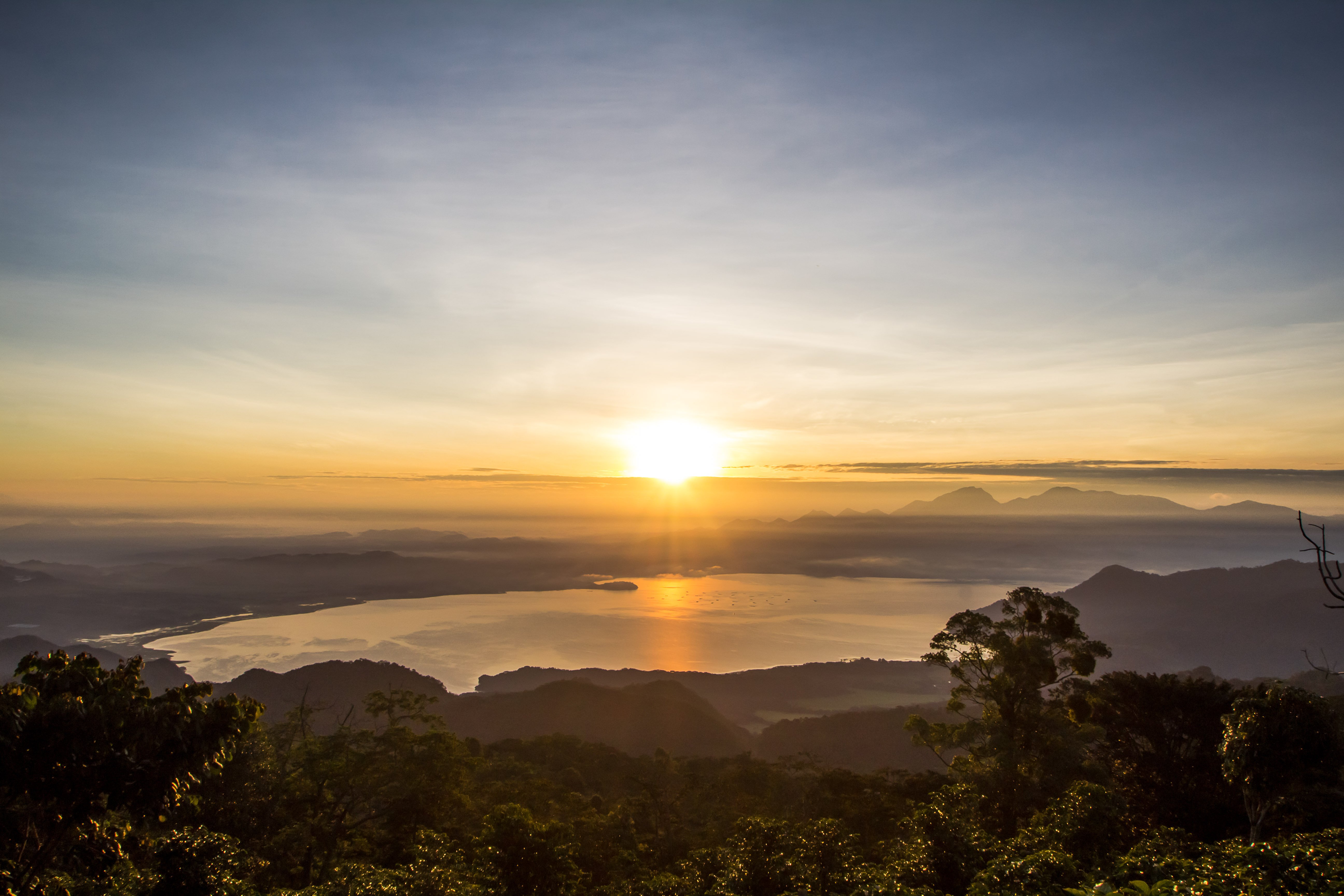
Honduras, a beautifully biodiverse Central American gem, offers everything birders look for in a travel destination, starting with ready access to lots of highly coveted bird species. In particular, the Lake Yojoa region, featuring the country’s largest freshwater lake and the lush mountains that surround it, offer abundant avian-driven excitement. In June 2018, the Honduras Institute of Tourism assembled a feisty team of Honduran and American writers, photographers, guides, and tourism professionals to ever-so-quickly explore just how spectacular birding certain parts of the country could be. We started by blitzing the Lake Yojoa region with tremendous success:
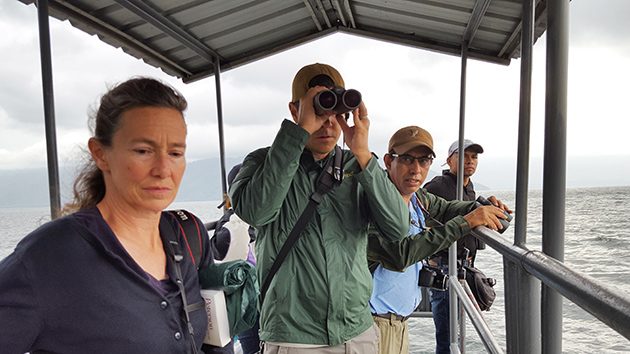
Yobani (3rd from left) may have known what we were getting into on the lake, but Sophie Osborn, Dorian Anderson, and José A. Maradiaga weren’t so sure…
LAKE YOJOA
Lovely Lago de Yojoa fills a volcanic basin ringed by lush mountains, many of which contain substantial tracts of protected lands and national forests. As a whole, this area boasts a list of over 400 birds, many of which are more accessible than ever before. Our group started with a quick pontoon boat ride along the lake out of the Hondayute Marina to scan its marshy shore for rails, bitterns, and long-legged waders. You can’t help but notice the large numbers of Snail Kites deftly working the shore for their eponymous prey. Kites aren’t the only birds in the air here; we saw all kinds of flycatchers, thrushes, swallows, parrots, and—-making us Americans feel right at home—-Red-winged Blackbirds and Great-tailed Grackles. Don’t ignore those vultures though, as flocks of those familiar Black and Turkey Vultures usually hide some Lesser Yellow-headed Vultures.
 Rancho Bella Vista… home of the crakes
Rancho Bella Vista… home of the crakes
What waterfowl and waders do the teeming shores of Lake Yojoa hold? One prize happens to be Pinnated Bittern, which can frequently be seen flying along the edge of the shallows. In this case, I didn’t have the good fortune some of my colleagues did, but did catch a perfect view of Least Bittern. We all hit the jackpot with crakes down the road from the marina at Rancho Bella Vista, hearing multiple Gray-breasted Crakes and enjoying crippling views of one nonchalant Yellow-breasted Crake from the long, colorful boardwalk extending into the marsh.
Waders around Lago de Yojoa included Great and Snowy Egrets, Green, Little Blue, and Great Blue Herons, Black-crowned Night Herons, and Roseate Spoonbills, while Northern Jacana, Pied-billed Grebe, Black-bellied Whistling Ducks, Muscovy Ducks, and both gallinules round out the usual suspects. Add a few crushers like Bare-throated Tiger-Heron, Amazon Kingfisher, and Zone-tailed Hawk and you’ll see why even a few hours birding Lake Yojoa will stick with you for years. If you’re smart, you’ll set aside a few days, weeks, or months to explore instead.
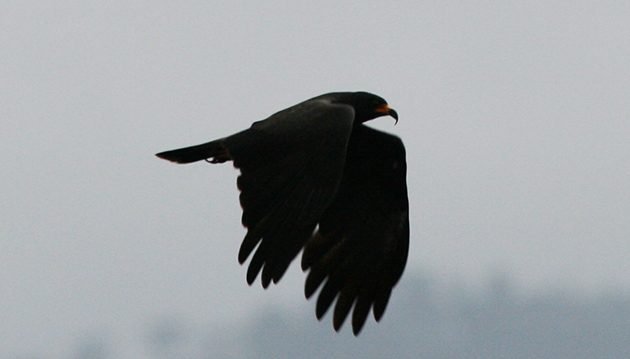 A Snail Kite in profile in unmistakable
A Snail Kite in profile in unmistakable
PANACAM LODGE
Ensconced within the verdant splendor of Parque Nacional Azul Meambar, just a short drive from Lake Yojoa, lies PANACAM Lodge, the prototypical rustic mountain hideaway. Travelers familiar with the Latin American birding circuit know and love this sort of lodge, slightly short on amenities but very long on birds. Would you trade in-room wifi for three species of motmot and two different toucans right outside the hotel restaurant? If so, I’ve found the perfect place for you.
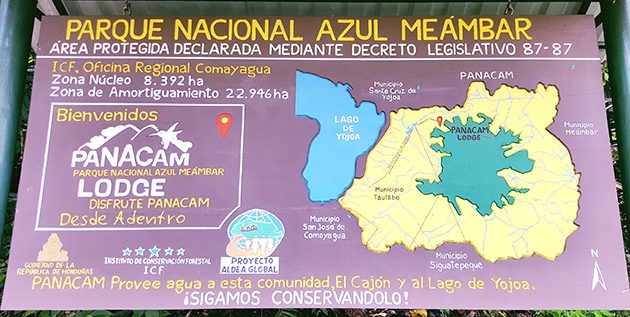 Note how close PANACAM is to Lake Yojoa
Note how close PANACAM is to Lake Yojoa
PANACAM, an acronym for the full name of the park, is co-managed by the NGO Proyecto Aldea Global Honduras. The lodge, which feels nicely elevated at 750m above sea level, serves as a gateway to the park’s lush subtropical rainforests. However, you don’t have to delve into the depths of the forest to see splendid birds. The action begins as soon as you notice the pendulous nests of Chestnut-headed Oropendulas, visited as well by Giant Cowbirds. Lesson’s Motmots are everywhere, though you’ll want to pay attention for the rarer Keel-billed and Turquoise-browed varieties. Just walking around the open areas of the picturesque grounds yields tons of tropical pigeons, doves, flycatchers, woodpeckers, parrots, and trogons. You know you’re in the right place when you score easy views of Crimson-collared Tanager, Yellow-throated Euphonia, Masked Tityra, and Plain Chachalaca. We even found the often elusive Green-backed Sparrow right off the entry road.
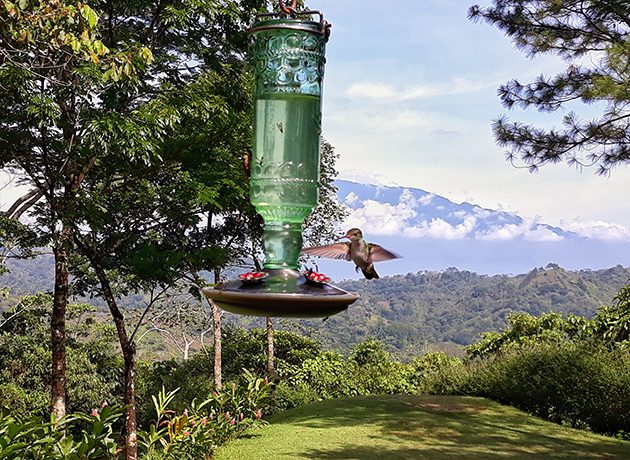 One of the feeders on the back deck of the lodge © brand-new birder Shary Zepeda
One of the feeders on the back deck of the lodge © brand-new birder Shary Zepeda
Nothing improves a morning in the rainforest like the view from a platform. PANACAM’s sturdy model takes you right to the top of the canopy, perfect for viewing special species like Yellow-bellied Tyrannulet and Northern Bentbill. We wisely moved from the tower to breakfast, where we enjoyed delicious tipicos while catching point blank looks at the White-bellied Emeralds, Rufous-tailed Hummingbirds, and Violet Sabrewings at the feeders. After breakfast, we were finally able to chase down the Black-faced Antthrush calling from just off the deck. That’s right… an antthrush right behind the lodge. What a place!
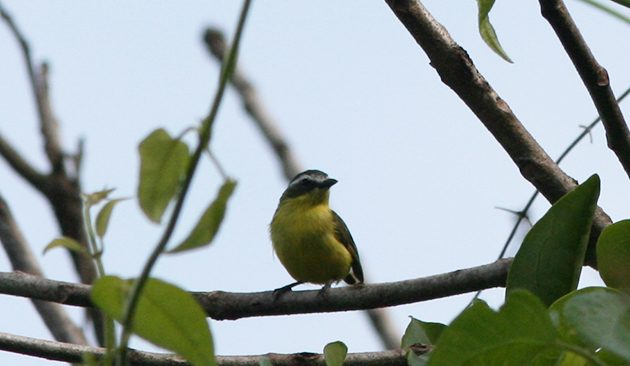
Want a bad picture of a good bird? Here’s a Yellow-bellied Tyrannulet from the top of the viewing tower.
Just because you don’t have to explore the forest trails to find fantastic birds doesn’t mean you shouldn’t. PANACAM offers an 7km trail deep into its viridian heart. We didn’t have time to travel a fraction of this inviting trail, but we explored just enough to find Little Tinamou, Buff-throated Foliage-gleaner, and Red-throated Ant-Tanager, not to mention another Black-faced Antthrush casually teeter-tottering across the trail. You get bonus points for following the calls to the Stripe-throated Hermit lek. Not bad for a single morning’s birding!
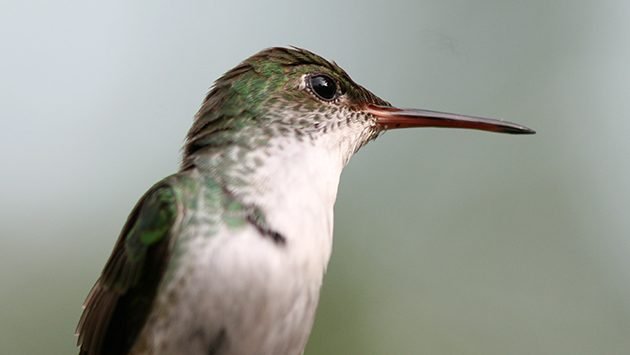
If I can get this close to a White-bellied Emerald, you can too!
SUMMARY
PANACAM Lodge delivers excellent food, wonderful lodging, and endless birds. Two nights at PANACAM hardly scratches the surface of what this magical lodge and the greater Interior Atlantic Forest have to offer, especially when you consider some of the extensions ambitious birders can add from this home base. Scouring Lake Yojoa for rarities is just the beginning of this area’s options. PANACAM serves as a perfect base for many of the most coveted birds in Honduras, even the mighty Honduran Emerald if you know where to look. Luckily, I know and will be happy to share that information very soon…
*****
I will always be grateful to Instituto Hondureño de Turismo for showing me how phenomenal birding, culture, and hospitality can be in Honduras (and sharing some of the better photos you see above!) Muchas gracias as well to Professor Oliver Komar, Yobani A. Peraza of Xukpi Tours, and other outstanding local guides for getting us on so many amazing birds!
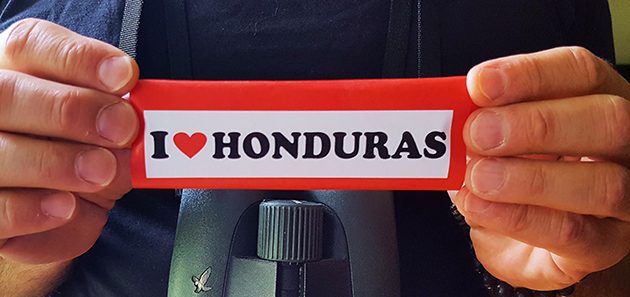













Hi all i love johoa is it a beautiful places for birding amigos
I want to go back to Honduras. Especially so I can finally see a quetzal!
You actually mean you haven’t… yet?
I thought only the Black Woodpecker was the nemesis?
Quetzal is nemesis number 2!